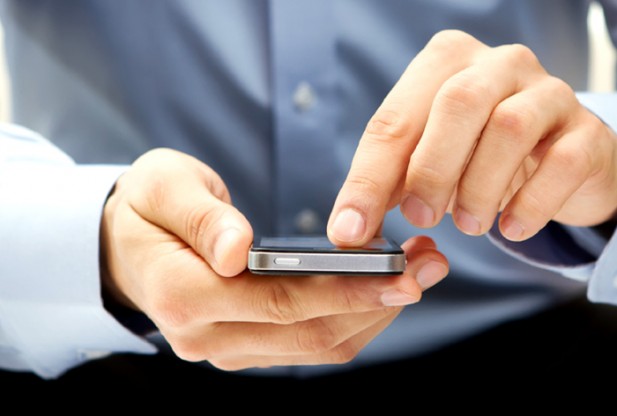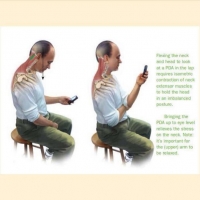A great concern for chiropractors is posture and its impact on our spine, especially our children’s developing spines. We emphasis the importance of a school backpack and where it should be worn and how it should be worn. In 2015, it is more common to see the backpack worn over both shoulders (still too heavy and too low but a move in the right direction) than in generations previously where it was slung over one shoulder. However, the new postural concern in todays technology age is the introduction of the smartphones, texting and social media usage.
Numerous surveys, show that social media use is increasing by the year, with younger users spending most of their time texting or online. My concern as a chiropractor is not in the way we are using the internet but in the way in which we are accessing it. A men’s fitness survey found that 70% of adults and 30% of children and teens reported that their use of an electronic device like a smartphone, tablet or laptop computer had caused neck, shoulder, wrist or finger pain.
When the head is in the neutral position, in line with the shoulders and hips, the average head weighs approximately 4.5-5.5kg. However, when the neck moves forward, the biomechanical forces exerted on the cervical spine increases exponentially.
– 0 degrees, head weighs 4.5kg;
– 15 degrees, head weighs 12.3kg;
– 30 degrees, head weighs 18.2kg;
– 45 degrees, head weighs 22.3kg;
– 60 degrees, head weighs 27.3kg; (Hansraj 2014)
Looking at theses numbers we see that as the neck moves forward into that slumped head, slouching position, the weight of our head increases. This in turn increases stress on the cervical spine, leading to headaches, neck pain, shoulder pain and decreased lung capacity due to poor diagrammatic movement and restriction. This increased stress on the anterior cervical spine over a period of years leads to a degenerative affect, as there is increased pressure on the anterior disks. This leads to the loss of the natural curve of the cervical spine, potentially putting your spine at risk of wear and tear and degeneration, the repair of which could include the possibility of surgeries.
People spend an average of 2-4 hours a day with their heads tilted over reading and texting on their smartphones and devices. This cumulatively is 700-1400 hours per year of excess stress on the cervical spine. It is feasible that a high school student may spend an extra 5,000 hours in a poor posture position that will directly impact on their growing spine. With digital media use increasing and not slowing down, we need to work on ways of reducing the impact that this will have on our spines.
WHAT CAN BE DONE?
Firstly, we can start looking at the ergonomic setup of desktops and have the middle of the screen at the same level as your outstretched arm in front of you. This goes for laptops as well. The portability is fantastic for what we can do on the run, but it is also its downfall, causing us to look downward toward a screen on our laps. Using docking stations for the laptop with separate keyboards when at a desk can help reduce spinal stress.
We can use standing desks. Slouching forward has been shown to engage the flexor system and dampen down neural activity in the brain. Standing desks help maintain the posture and also brain activity.
Take regular breaks from your work. Even just looking off into the distance and then back at the screen can add benefit. But try and get up and move around every hour if possible.
When using a smartphone or tablet try and have the screen at eye level instead of bending forward with your head and looking down. This can be down quite simply by using your free hand to support the elbow of the hand holding the device. Remember, when your arms get tired that is a good sign that your body is fatiguing and needs a break. So instead of losing your posture and slouching go take a one!
We also need to strengthen the muscles between our shoulder blades (scapulae) to be able to hold our shoulders back. Everything we do is in front of us, so there should always be an emphasis on strengthening our back muscles. We do this as a baby when we have tummy time and then start crawling. As adults we can do this with pilates or yoga classes in opening the shoulders up. Another great exercise is overhand pull ups, but these are tough if you can’t do one to start with. Even hanging on a straight bar for a time and engaging the muscles between your scapulae can be the start of great things to come.
If you would like more information or would like to book an appointment at Neurohealth Chiropractic – please call the clinic on 9905 9099 or email us admin@neurohealthchiro.com.au or fill in the contact form from our website www.neurohealthchiro.com.au
Sign up to receive Neurohealth Chiropractic’s Free monthly health newsletter on the Right Hand Side of this page. Filled with great information and lots of easy health tips to keep you at Optimal Health!





